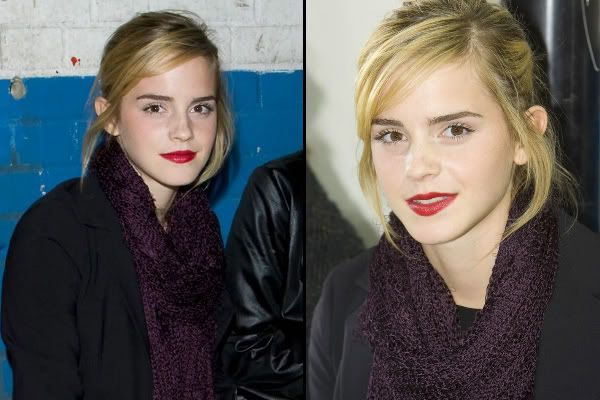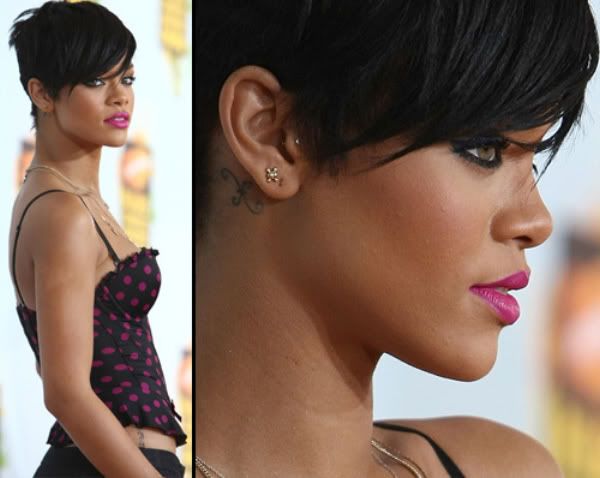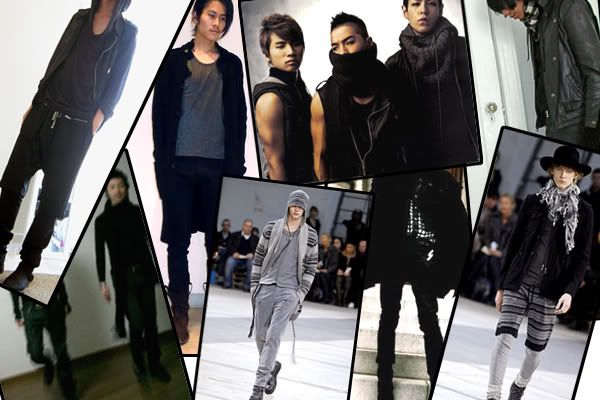Interview with Eloise Grey: The tweed queen on shops, literature and British design
Eloise Grey is the living and walking image of her brand: quintessentially elegant and very British. Though relatively new to the fashion scene, her timeless collection of expertly tailored tweed separates has garnered interest from high profile buyers. Before the opening of her new Farnham shop, in Surrey, on October 2nd, Eloise Grey answered
Lucie Goulet’s questions.
You are opening a boutique in Farnham, why did you decide to do this?
It’s something I’ve always wanted to do in conjunction with online as it enables me to bring together work which carries a certain elegance and aesthetic as well as strong sustainable stories.
However, I never expected to do it quite so soon. I got to know Paula Beaumont, who owns Purity, an ethical shop selling everyday wear such as jeans, cotton jersey clothing, stocking labels such as People Tree and Komodo. She had the first floor of her shop sitting empty and wanted to do something more luxury upstairs, but when recession struck, these plans were put on hold. I was looking for studio space and so we have gone into partnership.
Farnham is my nearest town. It has a strong connection to the creative industry with important craft galleries and the University of the Creative Arts. The shops are all quite unique and independent so it’s a little more original than your average high street. The catchment’s area is good: from the South Coast to South London all within 45 minutes.
What steps have you taken to make this shop ethical?
I’ve chosen work that is made in the UK and the fabrics are mostly organic or ethical in some way. I want my work to have a low carbon footprint. I also know each of the designers personally – I think it is important, and rather wonderful, to have a direct connection with the producers. I feel more confident about the provenance and think my customers like this too.
When I’ve stopped carting kit around for the shop I plan to commute to the shop by bus. I live 5 miles away in a small village. I have always an ethical policy about my suppliers (such as electricity and stationery) and I’ve kept this up.
What is the main hurdle facing ethical designers these days?
The weight of main stream brands exert over the mainstream media, store buyers and customers is sometimes overwhelming as it seeps into their consciousness and so they become rather like sheep. Small unique labels such as mine find it hard to communicate the message and reach the customers. When we do reach them they love us because we seem so fresh.
Also, it’s hard to be different when buying habits dictate that you spend less on each item, even though you spend more in the end and you need more cupboard space. Twenty years ago my work would be much more normal a price to pay for a coat (as a proportion of income) as people would buy them to last longer and they were made with that in mind. 
You studied Italian at Edinburgh University. Why did you decide to go from being a linguist to being a fashion designer?
I was quite academic so it was almost automatic that I should go down that route instead of studying fashion. I lived in Italy for five years after graduating and this has definitely influenced my work. When I lived there in the 1990s people always stressed the importance of quality, the provenance of materials and design in a way the English didn’t. There were small artisan fashion labels, which now have become ubiquitous brands and lost their soul. Although my work seems quintessentially British, I think the Italian aesthetic and standards of quality have subtly influenced my work.
However, I’d always made clothes for myself, from the age of 10 and so I went back to this at a certain point and re-trained to learn tailoring and design. I think it was good to do this with a good baggage of life experience, visual vocabulary and of course a love of literature.
What sort of women are your clothes aimed at?
The kind of woman (and man) who wants something unique and elegant, who likes to know the story of something and connect with objects in a deeper way. It’s a very different approach to a status-driven lifestyle. They have more important things to do than to spend all their free time shopping, but when they do, they want to really value and delight in the process; it’s quite personal. Sometimes they are very well informed about ethical fashion, and sometimes don’t really know about it, but they all experience beauty and craftsmanship.
 You work predominantly with tweed, why is that? Are you looking to introduce any new fabrics to up-coming collections?
You work predominantly with tweed, why is that? Are you looking to introduce any new fabrics to up-coming collections?
I’m looking at some lovely eco-linens for shirting, and hemp for summer jackets and dresses. The Isle of Mull weavers have Soil Association certification on using some dyes so I may introduce colour next A/W. I also have a special friendship with Les Indiennes who are based in the US and work with exquisite hand-blocked Indian cottons, so I am letting that idea percolate.
Do you have any further expansion plan after the opening of your Farnham boutique?
I am also launching a menswear collection so I shall be exploring this side of fashion. I will see how things go. I would love to have a space in London but I need to do things at the right pace.
Do you feel that the current economic climate has affected the way people shop?
Yes, some people are really understanding the value of buying only garments that will last, that are worth the money. Cheap clothing isn’t really good value after all.
Many coats for this season are named after famous women writers. How did they influence your inspiration and design process?
It started with a photograph by Richard Avedon of the playwright, Samuel Beckett. It’s a famous diptych that was all over London a few years ago to celebrate the Beckett centenary. I loved the folds of his ageing skin and the folds of his tweed jacket, obviously a jacket he’d had for decades. I designed a coat based on this inspiration and started to look at images of other writers of the era and it went from there. I like the quality of confidence in the women writers of that era. They were pioneers of a kind of proto-feminism and sense of being able to do what you want or to form your own set of values, or dress in the way you want.
There was quite a lot of tweed in that era too. It was a very functional fabric, and with good tailoring, elegant as well.
What else inspires you?
Tailoring, obviously, with all the slightly nerdy details like ticket pockets. I love those indomitable sensible English ladies who are quite frumpy and not at all glamourous. I like their spirit. I like to use some of their clothing looks, add a bit of humour and lithe sexiness and subvert it a little.
What other eco brands do you admire?
I’ve chosen Keep and Share, Makepiece and Elena Garcia for my boutique. I also love Estonian designer, Reet Aus, who I met at London Fashion Week in February. I love Terra Plana shoes and rather like Po-Zu’s boots. I admire what Gossypium have done and also love Sonya Kashmiri’s bags.
 You have a scheme whereby people using public transports to come to your shop get a 10% discount. Is the brand involved in any other green initiatives? Why is it important for you to be an environment-aware company?
You have a scheme whereby people using public transports to come to your shop get a 10% discount. Is the brand involved in any other green initiatives? Why is it important for you to be an environment-aware company?
It’s fundamental. I don’t really think why anymore, it’s just the only approach I can take. I would much rather go back and be a salaried employee in the corporate world than do what I do in an unethical way. I think we will look back and say why did we let things get so bad.
I have been involved in the Transition Town movement and am part of the core group in my town Farnham. It is about acting on a local level to come together to live a low carbon life because we believe that as individuals we are too small a unit and governments are too big and slow and at a town level it feels like you can do something It’s exciting to see how many people want to do something, however small.
















 Summer is the time when every woman wants to show how beautiful and fashionable she is. Not only clothes take part in forming the style. Accessories are also very important; no style can be complete without a trendy necklace, bracelets or other little details. As far as during this season of the year you have to cover your head for you may get sunstroke. A hat or a bonnet may become a perfect accessory to fulfill your style and express character.
Summer is the time when every woman wants to show how beautiful and fashionable she is. Not only clothes take part in forming the style. Accessories are also very important; no style can be complete without a trendy necklace, bracelets or other little details. As far as during this season of the year you have to cover your head for you may get sunstroke. A hat or a bonnet may become a perfect accessory to fulfill your style and express character.  Another fashionable way to cover your head is a cap. Of course you have to pick them very carefully and it definitely goes with sporty style or jeans. Men should pick washed pigment-dyed caps. You don't have to buy a new one and make it look as if it was used for 10 years, you'll undoubtedly find those in any fashionable shop. While men are into "dirty" style, women are suggested caps with flowers. A bright colored cap will surely make you look trendy and add charm to your appearance.
Another fashionable way to cover your head is a cap. Of course you have to pick them very carefully and it definitely goes with sporty style or jeans. Men should pick washed pigment-dyed caps. You don't have to buy a new one and make it look as if it was used for 10 years, you'll undoubtedly find those in any fashionable shop. While men are into "dirty" style, women are suggested caps with flowers. A bright colored cap will surely make you look trendy and add charm to your appearance. If you can't find a hat or a bonnet that fits to your style or your face shape, choose an original and very practical way to cover your head. Wear a turban. Yes, it's very original and fashionable. You may choose any material and tie it up any way you like. It goes perfectly with any style. Moreover, it creates a characterized style.
If you can't find a hat or a bonnet that fits to your style or your face shape, choose an original and very practical way to cover your head. Wear a turban. Yes, it's very original and fashionable. You may choose any material and tie it up any way you like. It goes perfectly with any style. Moreover, it creates a characterized style. 

























 You work predominantly with tweed, why is that? Are you looking to introduce any new fabrics to up-coming collections?
You work predominantly with tweed, why is that? Are you looking to introduce any new fabrics to up-coming collections?
 You have a scheme whereby people using public transports to come to your shop get a 10% discount. Is the brand involved in any other green initiatives? Why is it important for you to be an environment-aware company?
You have a scheme whereby people using public transports to come to your shop get a 10% discount. Is the brand involved in any other green initiatives? Why is it important for you to be an environment-aware company?









![Validate my Atom 1.0 feed [Valid Atom 1.0]](valid-atom.png)










